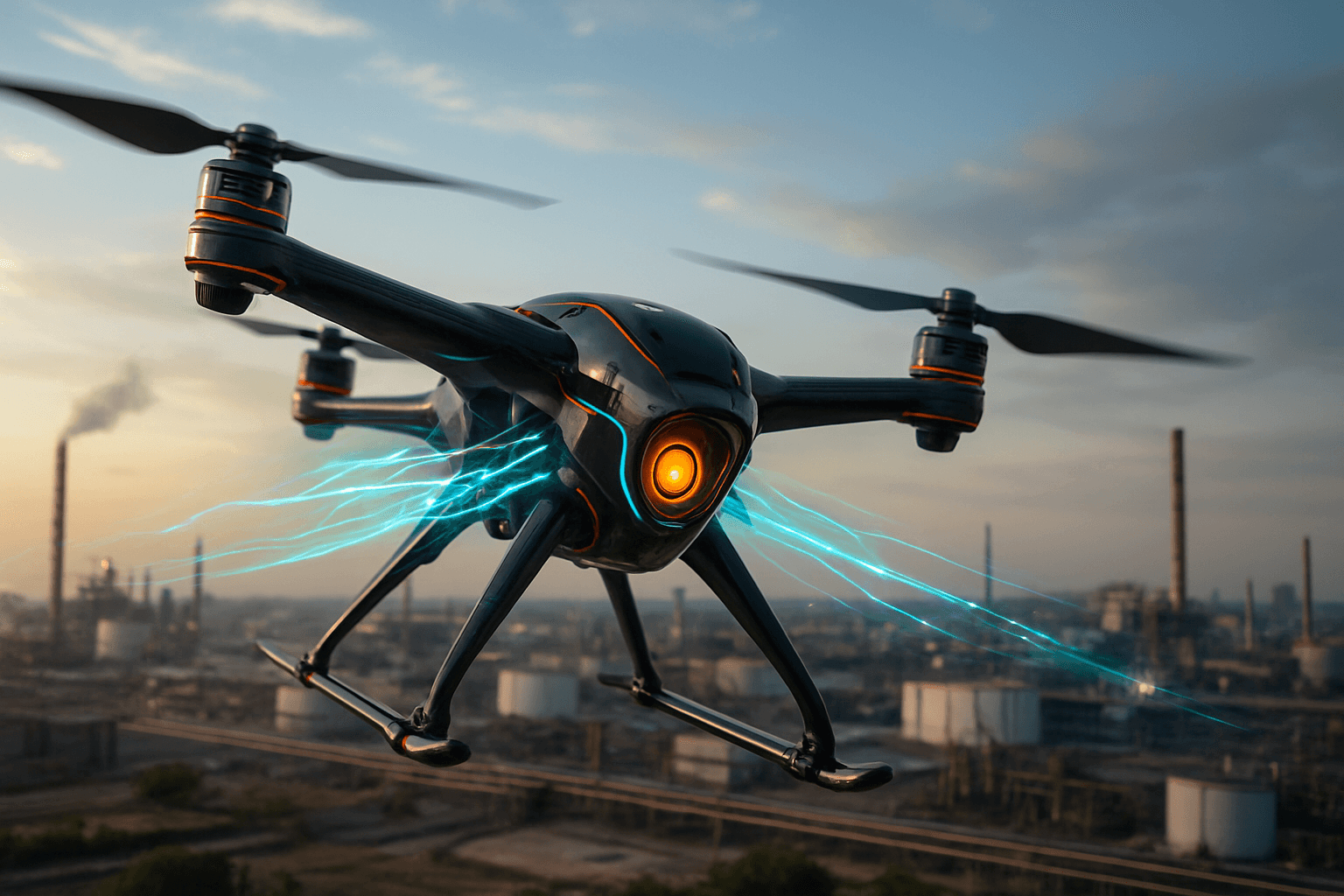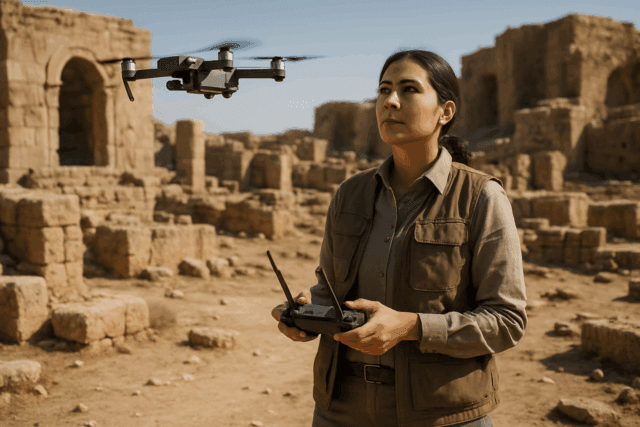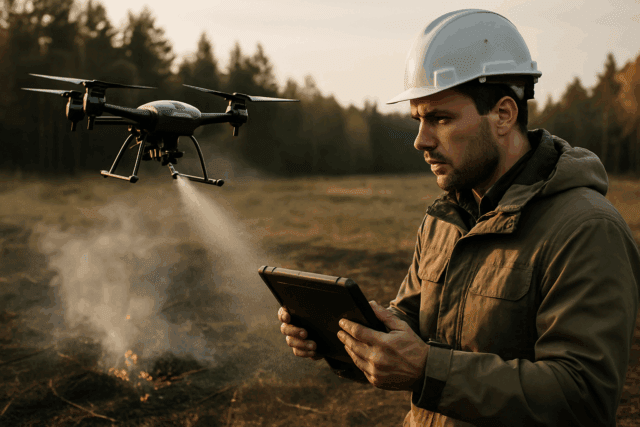Drones have revolutionized industries ranging from agriculture and energy to security and delivery services. At the heart of every drone’s operation lies its power system, which directly influences performance, flight duration, and overall efficiency. A well-designed power management system (PMS) is crucial for realizing the full potential of any drone system. This article explores how these systems optimize drone performance, enhance safety, and extend operational capabilities.
Understanding Drone Power Systems
A drone’s power system is the backbone of its functionality. Understanding the components and technologies that make up the power system is essential for optimizing power management strategies.
Key Components
- Batteries: Lithium Polymer (LiPo) and Lithium-ion (Li-ion) batteries are the most common types used in drones because they offer high energy density and are lightweight. LiPo batteries are known for their high discharge rates, while Li-ion batteries have a longer lifespan and better energy efficiency.
- Motors and Propulsion Systems: Brushless DC Motors (BLDC) are commonly used in drones because they offer high efficiency, long life, and smooth operation. The design and size of drone propellers also play a role in power consumption. Larger and more efficient propellers reduce the energy needed to maintain lift, thus extending flight time.
- Power Distribution Board (PDB): The Power Distribution Board distributes power from the battery to the various components, including motors, flight controllers, GPS, and sensors. Efficient PDB design can minimize power loss and ensure that the drone’s power system operates smoothly.
- Flight Controller and Power Management Circuitry: Modern flight controllers are designed with built-in power management circuits to optimize energy consumption. These controllers monitor power usage and adjust the performance of motors and sensors based on the drone’s flight status.
- Voltage Regulators and Power Converters: Drones often feature voltage regulators or power converters that ensure the components receive the correct voltage and current, preventing over-consumption or under-utilization of power.
- Sensors and Payload: Drones equipped with additional sensors (e.g., cameras, LiDAR, thermal sensors) or payloads (e.g., packages, delivery items) consume more power, requiring specific power management strategies.
The Role of Power Management Systems
A Power Management System (PMS) is a sophisticated set of components and algorithms that control how energy is generated, stored, distributed, and used within a drone. It’s the “brain” behind the power, optimizing the use of every watt to maximize flight time, ensure safety, and enhance overall performance.
Key Functions of a PMS
- Voltage/Current Monitoring: A PMS continuously tracks individual cell voltages and overall current to prevent overcharging or over-discharging, protecting the battery from damage and extending its lifespan.
- Cell Balancing: Ensures uniform charge across all cells in the battery pack to prevent capacity degradation.
- Thermal Management: Monitors temperature to prevent overheating or freezing, maintaining the battery within safe operating limits.
- Power Distribution: Efficiently allocates power to various components, ensuring each receives the required amount without waste.
- Fault Detection and Protection: Detects and responds to any faults or anomalies in the power system, such as short circuits or overloads, protecting the drone and its surroundings.
- Data Logging and Communication: Records key power system parameters and communicates this data to the flight controller or ground station, providing valuable insights for performance analysis and maintenance.
Benefits of Implementing Power Management Systems
Effective power management in drone systems isn’t just about using energy efficiently but also about ensuring that every component of the power system works in harmony to extend flight time while maintaining the desired level of performance.
Maximizing Flight Time
- Battery Optimization: PMS optimizes battery usage by preventing overcharging and over-discharging, balancing cells, and managing temperature. This ensures the battery operates within safe limits, extending its lifespan and maximizing the energy available for flight.
- Efficient Power Distribution: By distributing power efficiently, PMS ensures that each component receives the necessary power without excess, reducing overall energy consumption.
- Adaptive Power Management: AI-powered PMS can predict the drone’s power consumption based on flight patterns, weather conditions, and payload, dynamically adjusting power usage to conserve energy when possible and optimize performance when needed.
Enhancing Safety
- Fault Detection and Protection: PMS can detect and respond to faults such as short circuits, overloads, or thermal issues, protecting the drone and preventing potential accidents.
- Redundancy: Some PMS incorporate redundant power sources or distribution pathways, ensuring that the drone can continue to operate safely even if one component fails. This is particularly crucial for critical applications like defense and emergency response.
- Monitoring Individual System Parts: Visionair’s power management systems, for example, monitor individual system components, enabling safety and emergency automation within the autopilot to keep the drone aloft and prevent crashes.
Improving Performance
- Optimized Motor Control: PMS can dynamically adjust the power supplied to each motor, optimizing thrust and stability while minimizing energy consumption.
- Energy-Efficient Flight Modes: Some drones are designed with energy-efficient hover modes that use advanced algorithms to reduce power consumption during extended hovering.
- Altitude and Speed Optimization: Power management algorithms can adjust the drone’s flight altitude and speed to optimize power consumption, ensuring the drone can fly more efficiently and cover longer distances on a single charge.
Cost Reduction
- Extended Component Lifespan: By preventing overcharging, over-discharging, and thermal stress, PMS helps extend the lifespan of batteries and other power system components, reducing the need for frequent replacements.
- Reduced Downtime: Proactive monitoring and fault detection can help identify potential issues before they lead to failures, reducing downtime and maintenance costs.
- Efficient Power Line Inspection: Drones equipped with PMS enable faster and more efficient power line inspections, reducing the need for planned outages and accelerating emergency response.
Innovative Power Management Techniques
- Battery Optimization and Power Control Systems: Advanced algorithms and control systems optimize battery performance by carefully managing charging and discharging cycles.
- Power-Efficient Flight Modes and Algorithms: Energy-efficient flight modes, such as optimized hover and cruise settings, use advanced algorithms to minimize energy usage while maintaining stable flight.
- Real-Time Power Consumption Monitoring: Continuous monitoring of power consumption allows for immediate adjustments to flight parameters and power allocation, optimizing energy use in real-time.
- Energy Harvesting: Integrating solar cells, fuel cells, and batteries can substantially enhance a drone’s endurance, with energy management systems prioritizing safety and durability when linking multiple power sources.
- Wireless Charging: Wireless charging technology provides a convenient and efficient way to recharge drones, reducing the need for manual battery swaps and enabling autonomous operation.
Power Efficiency in Communication and Navigation Systems
- Communication Systems: Technologies like LoRaWAN (Long Range Wide Area Network) are becoming popular in drone communications for low-power, long-range data transmission. Adaptive data rates adjust the data rate based on operational conditions, minimizing energy used by communication systems.
- Navigation Systems: Balancing precision and power efficiency is crucial in navigation systems. Techniques like optimizing the activation of Inertial Measurement Units (IMUs) during critical moments can reduce energy consumption.
- Autonomous Navigation and Power Conservation: GPS and AI-powered flight path planning enable drones to automatically choose the most energy-efficient route, considering factors like wind speed, temperature, and distance to reduce unnecessary power consumption.
AI-Powered Power Management
- Machine Learning for Power Optimization: AI and machine learning algorithms can predict the drone’s power consumption based on various factors like flight patterns, weather conditions, and payload, dynamically adjusting the power usage during flight.
- Real-Time Adaptive Power Management: AI can help adjust power management strategies in real-time by analyzing data from various sensors (temperature, battery health, motor load, etc.).
- AI-Driven Analysis of Drone Data: AI-driven analysis of drone data enables predictive maintenance, preventing unexpected failures and associated downtime, enhancing the efficiency of managing extensive energy infrastructure networks.
Applications Across Industries
The benefits of optimized power management extend across various industries that utilize drones.
- Agriculture: Drones equipped with PMS can efficiently monitor crop health, optimize irrigation, and apply pesticides, improving crop yields while minimizing energy consumption.
- Energy: Drones enhance the efficiency of managing extensive energy infrastructure networks through the integration of artificial intelligence and machine learning. They enable more frequent inspections, detailed asset monitoring, rapid emergency response, and improved worker safety.
- Infrastructure Inspection: Drones with PMS can inspect bridges, buildings, and other infrastructure more safely and efficiently than traditional methods, identifying potential issues before they become major problems.
- Delivery Services: Efficient power management is crucial for delivery drones to maximize their range and payload capacity, ensuring timely and cost-effective delivery services.
- Surveillance and Security: Automated drone surveillance, thanks to enhanced batteries and optimized power management systems, can operate for extended periods, providing wide-area monitoring and rapid response times.
Power Management System Components
A well-designed PMS integrates several key components to achieve optimal power management.
- Maximum Power Point Tracking (MPPT): MPPT boards optimize solar energy absorption, maximizing battery life and power output in solar-powered drones.
- Balance Boards: Balance boards distribute energy evenly to supercapacitors or batteries, preventing imbalances that can reduce performance and lifespan.
- Rectifiers: Rectifiers convert AC power from energy harvesting devices (like solar panels or vibration harvesters) into DC power suitable for charging batteries.
- Diodes: Diodes prevent negative current feedback into the generation devices, protecting them from damage.
- Alarms: Alarm systems alert operators whenever the output voltage reaches a low level, preventing potential harm to the entire system.
- Supercapacitors: Supercapacitors can supplement or augment batteries, offering faster charging and discharging capabilities.
Trends in Drone Power Management Systems
- Hybrid Power Systems: The integration of multiple power sources, such as batteries, fuel cells, solar cells, and supercapacitors, is becoming increasingly common in drones to enhance efficiency and endurance.
- AI-Powered Optimization: AI and machine learning algorithms are being used to optimize power usage in real-time based on various factors, such as flight patterns, weather conditions, and payload.
- Wireless Charging: Wireless charging technology provides a convenient and efficient way to recharge drones, reducing the need for manual battery swaps and enabling autonomous operation.
- Eco-Friendly Solutions: Increased focus on reducing carbon emissions and improving the sustainability of drone operations has led to the development of eco-friendly charging solutions, such as solar-powered charging stations.
Conclusion
Power Management Systems are indispensable for unlocking the full potential of drone technology. By optimizing energy use, enhancing safety, and improving performance, these systems enable drones to perform more effectively and efficiently across a wide range of applications. As drone technology continues to evolve, the importance of efficient power management will only grow, particularly in applications like aerial surveying, delivery services, and environmental monitoring. Embracing innovation in PMS is key to achieving new levels of sustainability, performance, and autonomy in the drone industry, ultimately contributing to the broader adoption of drones across various sectors.





